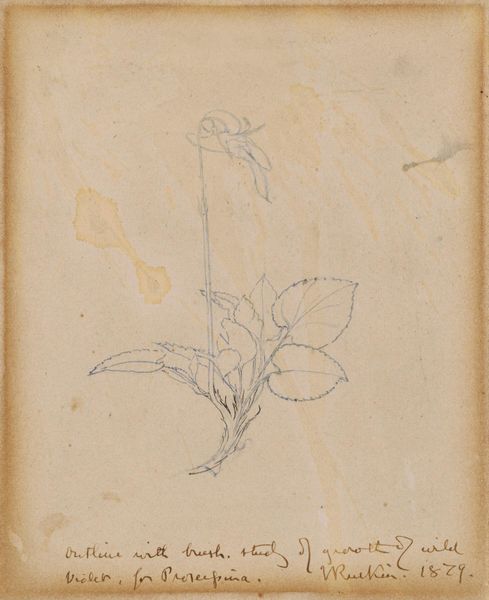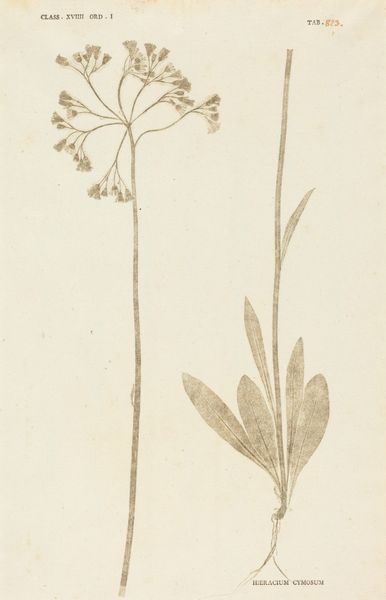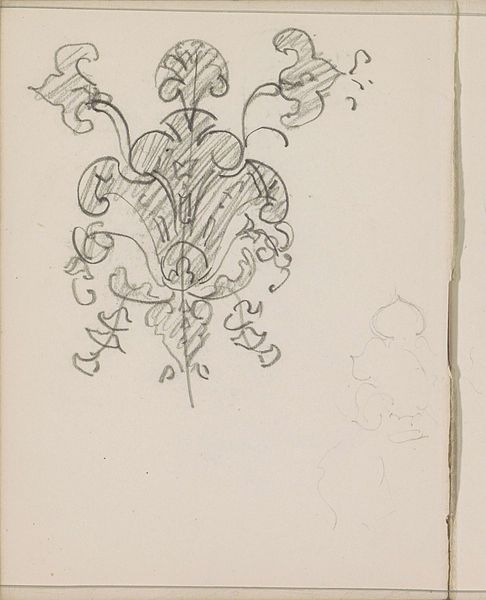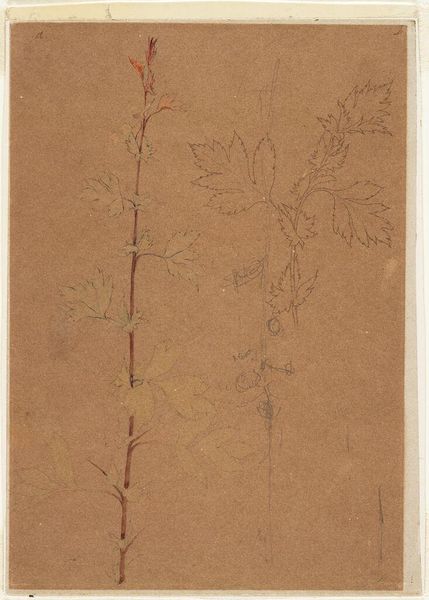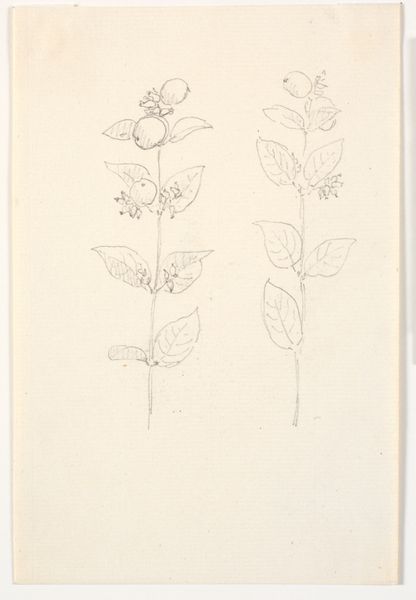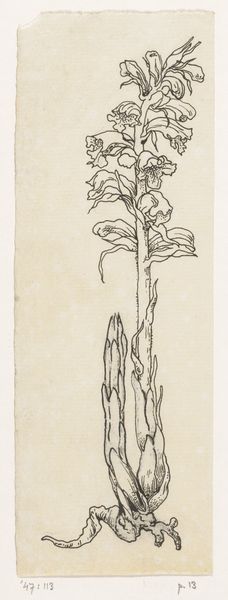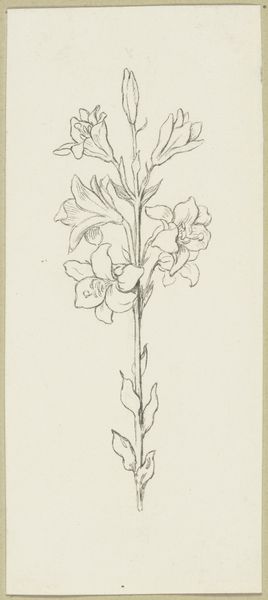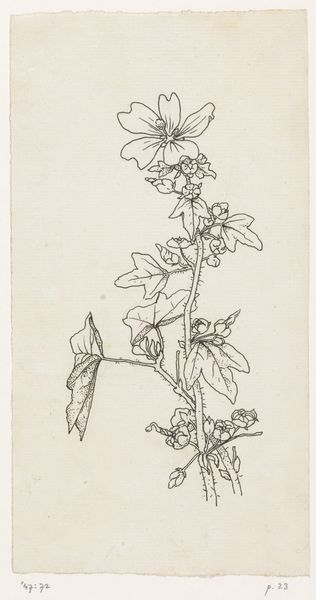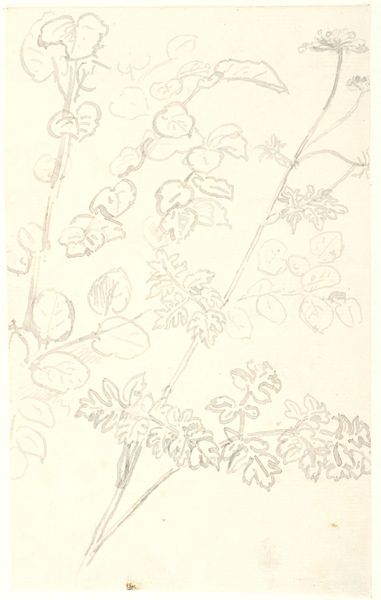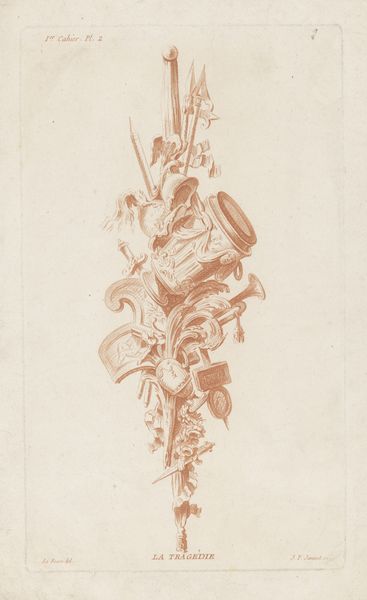
Dimensions: height 316 mm, width 122 mm
Copyright: Rijks Museum: Open Domain
Editor: We're looking at Antoon Derkinderen's "Stokroos," made with pencil and paper sometime between 1869 and 1925. It's a simple, almost ethereal sketch. What stands out to you about it? Curator: This drawing, beyond its botanical simplicity, speaks to the historical relationship between nature and art, and how that relationship has been defined by class and gender. What was accessible to women artists and those excluded from formal academies? Often, the domestic and the natural world. Editor: That's a really interesting point. It makes me think about the act of observation itself – focusing on this single hollyhock stem. Curator: Exactly! And how that simple act of observation, repeated across countless artworks, intersects with colonial narratives. Who gets to represent nature, and whose perspectives are centered? Does this resonate with Post-Impressionism, and how can it move the conversation on to issues of power within representation? Editor: It does, definitely. I was just seeing it as a quiet sketch, but I can see now that there is more going on. Thank you! Curator: Remember that these ‘quiet sketches’ often mask deep wells of social commentary and, even more subversively, demonstrate resilience in the face of systemic silencing.
Comments
No comments
Be the first to comment and join the conversation on the ultimate creative platform.

